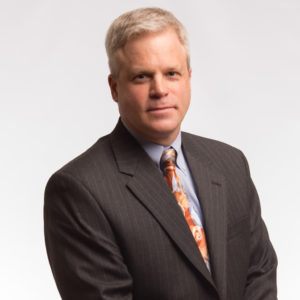When a company gets disrupted, it’s because leadership failed. It’s not because of a once-in-a-lifetime pandemic. Or Amazon. Or anything else that happened outside the C-suite and might seem unfair.
Leadership gets credit when the opposite occurs. If a company transforms its business model and grows 5x, 10x, 20x — or whatever astronomical number you equate with success — it wasn’t because of dumb luck, or changing market conditions, or favorable trade deals. It was because of sound, steady, courageous leadership.
Simply put, anything good or bad that happens to a company happens solely because of the levers that its leadership team pulls — or fails to pull. That was the message from Peter Sheahan, the internationally renowned speaker who delivered the keynote address on the first day of the National Association of Wholesaler-Distributor’s recent Digital Summit.
“The real path to accelerated growth, the real path to finding opportunity is for us as leadership teams to accept that our responsibility is not to protect and defend our current competitive advantage in the marketplace, but rather to successfully migrate our organization from one competitive advantage to the next,” Sheahan told the virtual crowd of distribution executives. “Our role as leadership teams is not to defend the past; it’s to position our organizations for the future.”
To drive home the point, Sheahan recounted the legendary stories of companies like Domino’s Pizza, Adobe and, yes, Amazon, all of which have routinely outpaced expectations and forecasts because of savvy moves from inside the boardroom — moves that were initially met with skepticism and resistance but which proved to be transformational.
But he also shared the stories of company leaders who refused to adapt to or even acknowledge the disruption happening to them. For example, when the CMO of a $60 billion grocery store corporation was lamenting the way Amazon had upended the industry through its delivery services as well as its acquisition of Whole Foods, Sheahan said the executive told him, “Don’t hold us responsible because we never saw it coming.”
Sheahan had one of his firm’s analysts do some digging, and he quickly discovered that grocery stores knew for years that Amazon would be coming after them. The industry — and this exec, in particular — should’ve seen the coming disintermediation. And they shouldn’t have used such a lame excuse when Bezos administered the coup de grâce.
“It’s exactly what we see in all industries when organizations are trying to grow in the face of change and uncertainty,” Sheahan said. “And the difference between those who do it successfully and those who don’t is almost never about whether they can predict the future. It’s almost never about whether they have access to enough capital. It’s always an issue with psychology and mindset and the orientation of the leaders themselves.
“Or to put it to a slightly different way, after 18 years working with organizations almost exclusively with their most senior leaders, I’ve come to understand that companies don’t transform, leaders do. In that example of ‘Don’t hold me accountable, I never saw it coming,’ it wasn’t a failure of data, it wasn’t a failure of insight, it wasn’t a failure of capital, it wasn’t a failure of trend analysis. It was a failure of leadership.”
The Three Keys to Successful Leadership
Sheahan’s keynote drew praise from the audience even as it made some of them squirm among talk of disruption and the dreaded “A” word delivering much of it. But he said there is a playbook for initiating transformation based on what others — including the aforementioned companies — have done within their businesses.
They broke free of the past and didn’t worry about what their competitors were doing but instead focused on where their customers were going, and how they could beat those same customers to that point.
But how, exactly, does a leadership team drive transformation at a company? Sheahan said the process requires three steps, all of which fall on the C-level executives to implement, embrace and continually reinforce during this process and throughout their organizations.
- Tell Yourself the Truth. Move from awareness of change to ownership of change. Don’t ask why is this happening to us, but instead ask why is this happening for us? Sheahan said leaders must “move into a mindset or psychology of ‘This is mine. I own this. I’m going to lead my organization to the future.’ The transformation required to accelerate growth is primarily a psychological journey because we already know all the answers. We just need to move to a place of acceptance and make that psychological leap so we can then get into action and taking ownership.”
- Unleash Ambition. Operate from a place of ambition, rather than a place of necessity. Sheahan asked the audience: “What do you want to create? What do you want to be in your industry? How do you want to move your industry and society forward?” He added, “If you want to be front-running the market, and just getting ahead of where your clients are, where would you be leading them? Where are they going? And how do you beat them there? Instead of looking around and trying to squeeze every possible last point of margin of a preexisting pie, ask the questions, ‘How do we create the next level of that pie?’ and ‘How do we move up the value chain and solve a problem?’”
- Drive Alignment. Re-orient from working hard in agreement to doing the hard work of alignment. These are two different concepts, Sheahan noted. “The No. 1 mistake leadership teams make when they’re trying to accelerate growth and transform themselves is they confuse the agreement of their team with true alignment.” He added, “Agreement is not alignment. We have to put our money, our time, our risks, our decisions, our capability where our mouth is. In other words, nothing changes until something changes.”
To sum it up and tie the three leadership secrets together, Sheahan said: “Our job as leaders is to go on the psychological journey of personal transformation, of telling ourselves the truth, of unleashing ambition, and of driving alignment. That puts us in positions to lead our organization in that same direction.”
Look for more coverage of NAW’s inaugural Digital Summit later in the week on MDM’s blog.
Related Posts
-
Nichols Paper & Supply Co. announced the appointment of Jason Olthoff as vice president of…
-
Jeffrey R. Lavers has been appointed executive vice president, Consumer Business Group, replacing Paul Keel.
-
Bearings manufacturer RBC Bearings names Robert M. Sullivan vice president and CFO, and John J.…






